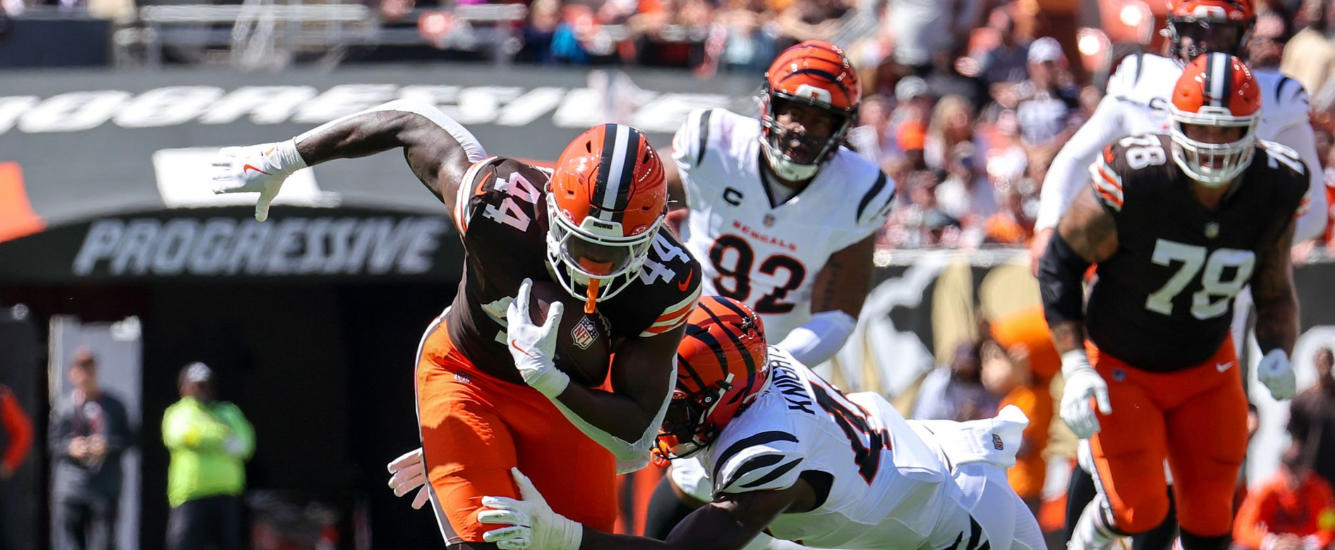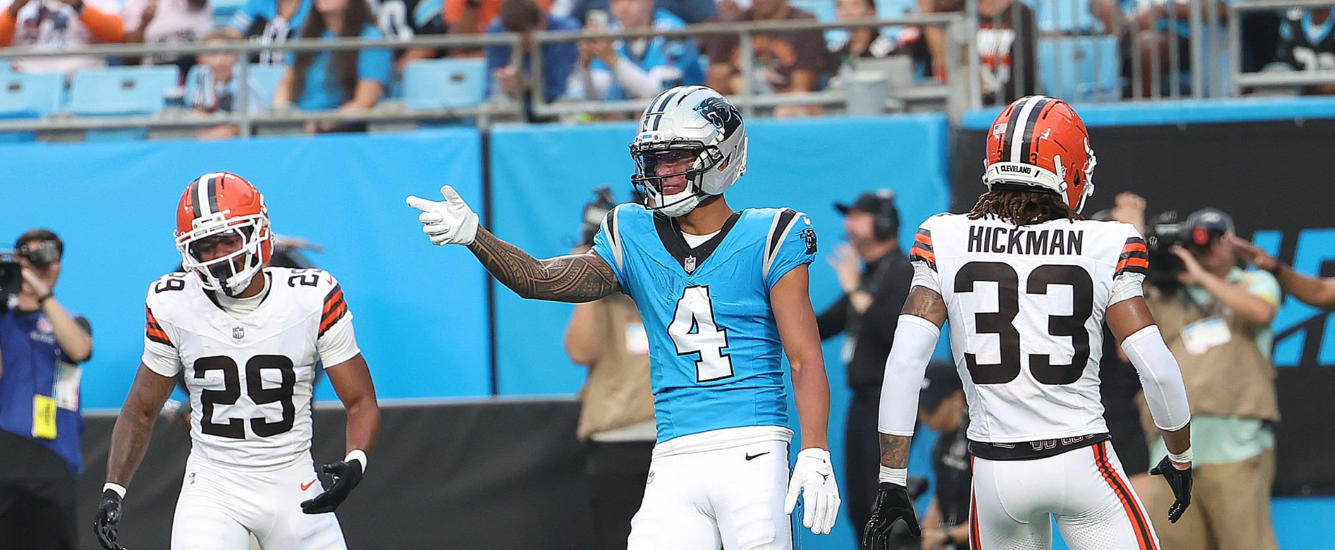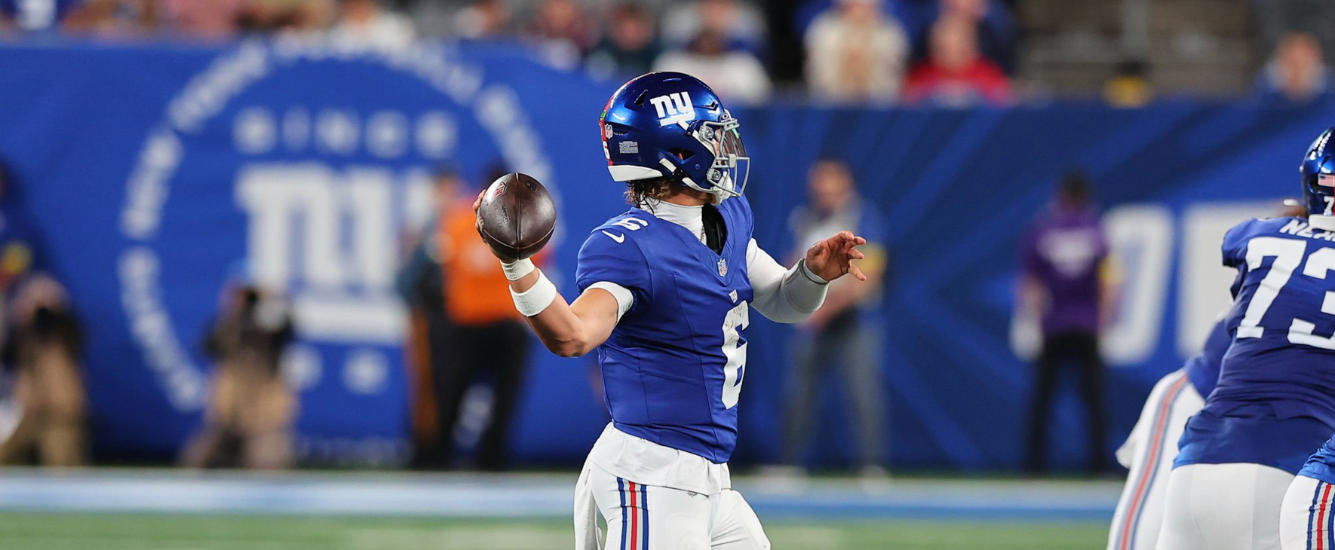Nothing tilts a fantasy matchup as quickly as one of your starting running backs breaking off a long touchdown run. And little matches the excitement of a new class of elite RBs joining the NFL. Dave Caban combines the best of both worlds as he presents Breakaway Rush Scores for the 2020 RB class.
I’ve always wondered if a correlation exists between NCAA breakaway rush ability and NFL success. Does having the ability to explode down the field for 20, 30, 40 or more yards signal talent, burst, explosion or any other abilities? Having gathered breakaway rush data from 2014 through 2020, I can now answer this question. For the purposes of this article, a breakaway rush is a rushing attempt in which an RB gains 15 or more yards.
Does A Penchant for Breakaway Rushes Carry Any Signal?
Before we discuss my findings, I have a tiny disclaimer. I didn’t have an abundance of data available to work with as I needed players who recorded three NFL seasons and had available college data — keep in mind, I only had data going back to 2014. This limited the analysis I could perform and methodology employed. I don’t think that the availability of more data would drastically change my conclusions, but it prevents me from considering this the definitive study on the topic.
So how did I approach answering this question? I popped into the RotoViz Screener and searched for all RBs with careers starting in 2014 or later and queried average half PPR points per game during their first three seasons. With this list of RBs in hand, I filtered out those that didn’t or are yet to have played three seasons. I also removed backs that recorded negligible activity in these seasons. I then compared their raw breakaway rushes and breakaway rush percentages to their half PPR points per game for the given time period. This left me with just 46 players — a smaller group than I would have liked.
After playing with the numbers, the most predictive data point I could find was a combination of a player’s total rushes of 20 or more yards plus his total rushes of 40 or more yards. Let’s call this “Breakaway Rush Score.” When these totals are combined and plotted against average half PPR points per game, we see that there is a relationship between the two variables.

Here are the top-20 Breakaway Rush Scores since 2014.[1]Keep in mind, my data starts in 2014 so players that logged collegiate games in prior seasons are short-changed.
| runner | Attempts | Breakaway Score |
|---|---|---|
| Bryce Love | 565 | 72 |
| Donnel Pumphrey | 884 | 70 |
| Darrell Henderson | 424 | 66 |
| Nick Chubb | 740 | 66 |
| Larry Rose | 738 | 63 |
| Travis Etienne | 479 | 62 |
| Ray Lawry | 637 | 62 |
| Dalvin Cook | 657 | 61 |
| Jonathan Taylor | 884 | 60 |
| Rashaad Penny | 474 | 60 |
| Saquon Barkley | 649 | 60 |
| Royce Freeman | 937 | 60 |
| Matt Breida | 534 | 59 |
| Ty Johnson | 343 | 53 |
| Ito Smith | 780 | 53 |
| Melvin Gordon | 343 | 52 |
| Devin Singletary | 666 | 52 |
| Justin Jackson | 1153 | 52 |
| Samaje Perine | 650 | 51 |
| Ronald Jones | 582 | 50 |
Explosion In Context
While this plots a strong relationship — stronger than speed score of the included cohort in fact — I wouldn’t recommend placing outsized emphasis on Breakaway Rush Score when evaluating players.[2]By this I mean don’t let the metric override a prospect’s entire profile. Like other metrics, it’s just an input in a larger equation. The sample is small, and the methodology includes a bias, as it is only looking at players that made it to the NFL and then accumulated some level of usage. Still, I do think breakaway rush totals can be considered when comparing similar players, and I was really surprised to see their relationship with fantasy scoring. As a result, for players that we feel comfortable projecting as NFL backs and foresee earning substantial usage, it can be used as a barometer while developing expectations. Breakaway rush percentages, that control for volume, carry a similar relationship but don’t appear to provide a better explanation of NFL fantasy scoring than do raw totals.
So to some extent, this is telling us that volume is important. Naturally, the more opportunities a back has, the more likely he is to break off a long rush. But on top of this, if he can produce long rushes with this volume, it’s an added bonus and might be a signal of other traits that translate to NFL success. This is pretty intuitive. On the flip side, perhaps a back that recorded a high percentage of rushes over 40 yards but saw low overall volume, thus low breakaway rush totals, isn’t a back that can be used in common game situations and is more of a gadget type player.
Whatever the reality is, breakaway rushes are a useful way to evaluate whether or not the scouting reports we read on a player are accurate. For example, we’d want to push back on a report that questioned Ke’Shawn Vaughn’s explosion or touted Clyde Edwards-Helaire as the most combustible back in the class.
Results of the 2020 Class




















